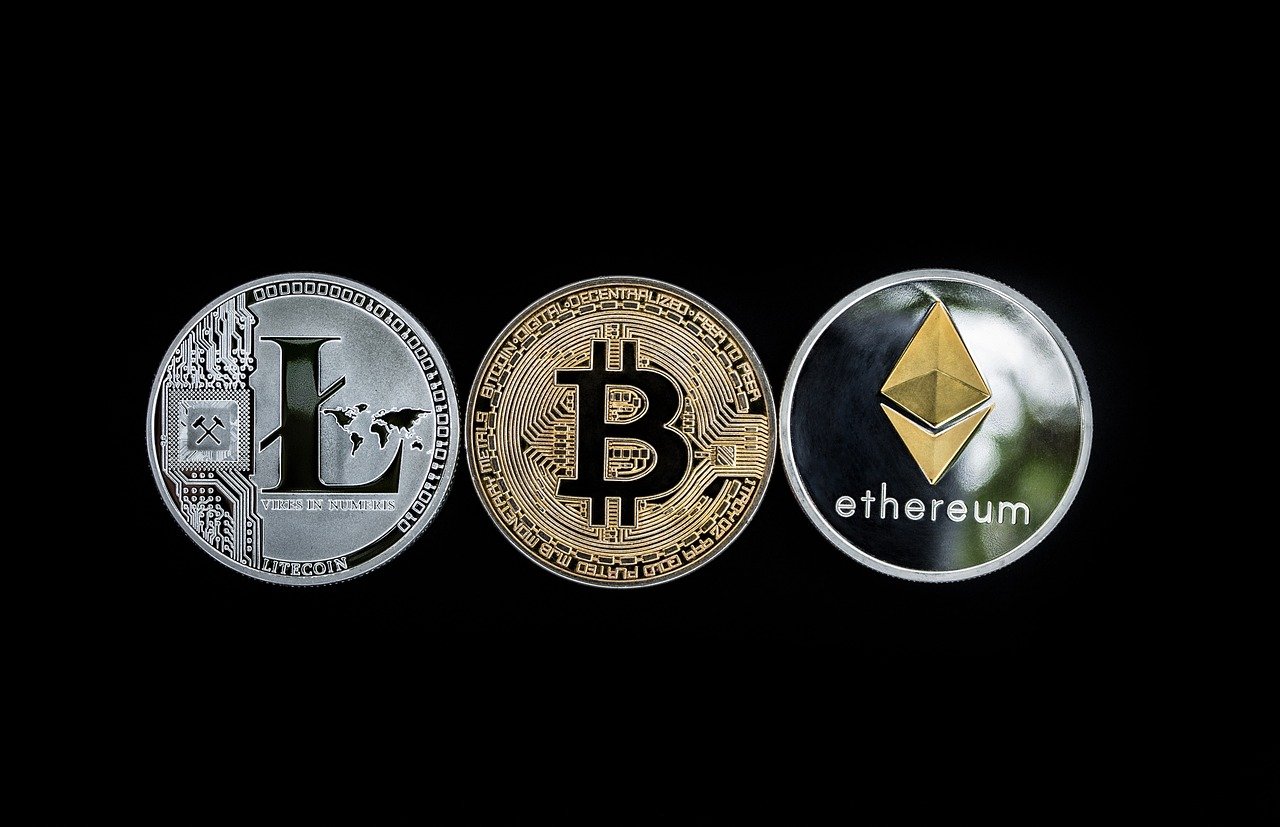
Introduction to Coinbase’s Decision
Coinbase, one of the leading cryptocurrency exchanges in the world, has recently made a significant announcement regarding its decision to delist Tether and several other stablecoins that do not comply with the Markets in Crypto-Assets (MICA) regulations. This move underscores the growing emphasis on regulatory compliance within the cryptocurrency space and signals a pivotal shift in how exchanges are approaching the listing of various digital assets.
The decision to delist noncompliant stablecoins is particularly relevant as regulatory bodies globally impose stricter guidelines to ensure the safety and integrity of digital financial ecosystems. Stablecoins, which are digital currencies designed to maintain value relative to a stable asset, such as a fiat currency, play a critical role in facilitating transactions and trading across cryptocurrencies. However, the lack of appropriate regulatory oversight can lead to concerns about the stability and security of these assets.
By removing Tether and other stablecoins that do not meet MICA standards, Coinbase is positioning itself as a compliant and responsible player in the evolving cryptocurrency market. This action not only affects the liquidity and trading options available to users on its platform but also serves as a broader signal to the industry about the importance of adhering to established regulations. Considering the regulatory environment’s rapid changes, exchanges that prioritize compliance may gain a competitive edge by fostering trust among users and investors.
The implications of this decision extend beyond the Coinbase platform, as it may influence other exchanges and market participants to reevaluate their own listings. The growing trend toward regulatory compliance indicates a maturation of the digital asset market, aiming to enhance transparency, reduce risks, and safeguard consumer interests in an ever-evolving financial landscape.
Understanding MICA Regulations
The Markets in Crypto-Assets (MICA) regulations represent a significant legislative framework introduced by the European Union aimed at regulating the crypto-asset market. The primary purpose of MICA is to create a harmonized legal framework for cryptocurrencies within EU member states, thereby fostering financial stability and investor protection. This comprehensive set of regulations encompasses various aspects of crypto-asset activities, ensuring that a regulated process governs them.
One of the key components of MICA regulations is the designation of specific categories of crypto-assets, including stablecoins. By outlining clear definitions and classifications, these regulations aim to mitigate risks associated with volatility and enhance the stability of the crypto market. In particular, stablecoins are addressed due to their growing prevalence and function as digital currencies pegged to traditional assets, such as fiat currencies or commodities. The regulations impose stringent compliance requirements on issuers of stablecoins, mandating transparency in terms of reserves, audit practices, and disclosures to safeguard user interests.
MICA also emphasizes the importance of clear communication and risk management, mandating that crypto-asset service providers disseminate essential information to their clients. Such measures are intended to bolster investor confidence in the emerging digital asset domain by promoting informed decision-making. Moreover, MICA introduces licensing and supervision mechanisms for market participants, reinforcing accountability and establishing a framework for regulatory authorities to monitor compliance effectively.
Overall, the MICA regulations aim to create a secure and regulated environment for the crypto-asset market. By setting clear standards and requirements, these rules hold the potential to foster innovation while simultaneously protecting consumers and ensuring the integrity of the financial system. The implications of these regulations will be far-reaching, particularly for stablecoins, which must now navigate a complex regulatory landscape to remain compliant and viable in the marketplace.
The Impact of Delisting on Tether
The recent decision by Coinbase to delist Tether, alongside other MICA noncompliant stablecoins, carries significant implications for the token’s market dynamics. Tether, known for its role as a widely utilized stablecoin, serves as a crucial medium for trading and value storage within the cryptocurrency ecosystem. The removal of Tether from Coinbase can adversely affect its accessibility, potentially resulting in decreased liquidity for users who primarily depend on this platform for transactions.
As a result of the delisting, Tether may experience volatility in its market value. It is important to note that stablecoins like Tether are designed to maintain a stable value, typically pegged to fiat currencies. However, reduced availability on major exchanges, such as Coinbase, can lead to fluctuations in trading volumes and could undermine confidence among investors. Users holding Tether on Coinbase might face challenges in converting it to other cryptocurrencies or fiat, which can lead to an increased sense of uncertainty in a market reliant on this stablecoin for stability.
Moreover, the delisting may prompt users to explore alternative platforms or stablecoins. This shift could potentially divide the user base and affect the market’s overall stability, as liquidity spreads across various tokens. Additionally, trust in Tether could be compromised as a wider segment of users may reconsider their reliance on it for transactions. The ripple effect of this delisting raises critical questions for the future of Tether and its role in a market increasingly scrutinized for compliance with regulatory standards.
In light of these developments, it is vital for users and investors alike to stay informed about potential changes to the platforms they utilize and the broader implications of regulatory shifts in the cryptocurrency landscape.
Other Noncompliant Stablecoins Affected
The recent decision by Coinbase to delist Tether (USDT) has raised concerns regarding other stablecoins that may also be noncompliant with the upcoming Markets in Crypto-Assets (MICA) regulations. MICA aims to create a unified framework for the regulation of cryptocurrencies and stablecoins across the European Union, enforcing stringent compliance measures. Consequently, various stablecoins that do not meet these criteria may face similar fates as Tether. Among the most notable stablecoins at risk are Binance USD (BUSD), USD Coin (USDC), and TrueUSD (TUSD).
Binance USD (BUSD), backed by the Binance exchange, has experienced scrutiny largely due to issues surrounding its reserve transparency. The lack of comprehensive audit reports diminishes confidence in its compliance with MICA, prompting concerns among regulators. As a stablecoin primarily used for trading and liquidity provision, these transparency concerns present a significant hurdle in securing compliance.
Another contender facing potential delisting is USD Coin (USDC). Despite its backing by reputable financial institutions and a relatively strong compliance history, USDC’s issuance model and regulatory alignment come under the microscope in the context of MICA guidelines. Potential gaps in adherence to regulatory demands may lead to a reassessment of its status by exchanges like Coinbase.
TrueUSD (TUSD) is also at risk, primarily due to its reliance on third-party audits for confirming USD reserves. While these audits may provide some level of assurance, they may not fully satisfy MICA’s requirements, particularly regarding ongoing, rigorous evaluations. The need for consistent compliance with regulations has become paramount, and the stakes have never been higher for stablecoin issuers.
As regulators worldwide push for stricter oversight, it remains crucial for stablecoins to address compliance concerns to maintain their standing in the ever-evolving cryptocurrency landscape.
What Delisting Means for Users
The recent decision by Coinbase to delist Tether and other MICA noncompliant stablecoins has significant implications for users engaged in the cryptocurrency market. For those holding assets in affected stablecoins, this change may disrupt trading strategies and affect liquidity. Users may find their ability to execute trades limited, necessitating a reevaluation of their current portfolios and strategies in the crypto space.
First and foremost, users need to be aware that the delisting of Tether and similar assets means they will no longer be available for trading on the Coinbase platform. This could lead to a significant decrease in the assets’ market value, as delisted coins typically experience a drop in demand and liquidity. Users may want to consider alternative platforms to trade their holdings or investigate peer-to-peer exchanges that may still support these coins. Evaluating such options can provide avenues to mitigate losses from the delisting.
Another important aspect for users is the need to explore alternative stablecoins that comply with MICA regulations. Coins such as USDC or DAI may turn into viable substitutes for those wishing to maintain stablecoin exposure. Transitioning to compliant stablecoins not only secures the assets but also offers users the peace of mind that they are operating within a regulatory framework that is increasingly prioritized in the cryptocurrency landscape.
As users navigate through these changes, understanding the broader implications of regulatory compliance in the crypto market is vital. By remaining informed and adapting their trading strategies, users can minimize potential losses while capitalizing on new opportunities that may arise from the evolving landscape. The delisting may indeed be a disruptive factor, but it can also serve as a catalyst for users to reassess their positions and make informed decisions.
The Future of Stablecoins Post-MICA
The introduction of the Markets in Crypto-Assets (MICA) regulations marks a significant turning point in the realm of stablecoins. As regulators outline frameworks to manage the dynamic nature of digital assets, the future of stablecoins appears set for a considerable transformation. Notably, compliance with these new regulations will likely become a defining characteristic of stablecoins moving forward. This compliance necessitates that stablecoin issuers adhere strictly to established guidelines, ensuring transparency, financial stability, and consumer protection.
One of the foremost developments anticipated in the stablecoin landscape is the emergence of compliant stablecoins that align with MICA’s regulations. These compliant instruments are expected to demonstrate enhanced stability through rigorous backing and prudent risk management practices. Unlike the noncompliant stablecoins that have already faced delisting by major platforms like Coinbase, the future compliant stablecoins will likely offer greater assurances to investors regarding their liquidity and pegging mechanisms. Furthermore, they may include features such as real-time auditing and support for mainstream regulatory standards.
As regulatory frameworks continue evolving, it is also plausible to envisage a more profound integration of stablecoins within traditional financial systems. Financial institutions may begin to leverage compliant stablecoins for cross-border transactions, user payments, and as a safe haven in times of volatility. The strengthened nature of these collaborations could lead to wider adoption and acceptance of stablecoins across various sectors, thereby safeguarding their purpose and usability.
Ultimately, the landscape of stablecoins post-MICA will be shaped by a balance between innovation and regulatory compliance. As stakeholders adapt to these changes, those stablecoins that embrace sound regulatory principles are more likely to thrive in a future where scrutiny is intensified, and consumer trust is paramount.
Responses from the Crypto Community
The decision by Coinbase to delist Tether and other MICA noncompliant stablecoins has sparked a variety of reactions from stakeholders within the cryptocurrency community. Exchanges, investors, and regulatory bodies have all expressed their viewpoints, highlighting the implications this move may have for trust, innovation, and regulatory compliance in the crypto market.
Exchanges that have historically supported stablecoins are now reassessing their own listings and compliance frameworks in light of Coinbase’s actions. Some exchanges view this as a necessary step towards aligning with regulatory expectations, which could bolster overall market integrity. Others, however, worry about the impact on liquidity and the potential for reduced trading volumes as popular stablecoins become less accessible. This bifurcation within exchanges illustrates the broader uncertainty in navigating the evolving regulatory landscape.
Investors have shown mixed sentiments, with some expressing concern over the rapid removal of popular stablecoins from exchanges. For many, stablecoins serve as a bridge to traditional finance and a means to hedge against market volatility. The delisting could lead to reduced confidence among retail and institutional investors alike, who may perceive such actions as a sign of instability in the stablecoin sector. On the other hand, some investors argue that this enforcement of compliance may ultimately lead to a more trustworthy ecosystem, encouraging innovation and the growth of compliant financial products.
Regulatory bodies have also weighed in on the situation, viewing Coinbase’s decision as a proactive measure in response to MICA—a regulatory framework established to enhance transparency and safety in cryptocurrency markets. They suggest that this could pave the way for a more structured regulatory environment where compliant projects flourish while those failing to adhere to standards are phased out. This development poses significant implications for the future of innovation in the cryptocurrency space.
Comparative Analysis with Other Regulatory Frameworks
The recent implementation of the Markets in Crypto-Assets (MiCA) regulations in the European Union has sparked discussions regarding its implications for stablecoins, particularly in light of Coinbase’s decision to delist Tether and other noncompliant alternatives. To better understand these developments, it is essential to compare MiCA with regulatory frameworks from other regions, notably the United States and certain Asian jurisdictions.
In the United States, regulatory oversight of stablecoins is fragmented, primarily divided among various federal and state agencies. The SEC has been involved in scrutinizing stablecoin offerings under securities laws, while the Commodities Futures Trading Commission (CFTC) considers them as commodities. This dual approach creates inconsistencies and potential regulatory loopholes, leaving issuers uncertain about compliance. In contrast, MiCA aims to provide a coherent regulatory framework that encompasses all aspects of crypto-assets, thereby fostering a more predictable environment for stablecoin operations.
Additionally, Asian jurisdictions present a mixed bag of approaches. For instance, countries like Singapore have adopted a progressive stance towards cryptocurrency regulation. The Monetary Authority of Singapore (MAS) has introduced a comprehensive framework, balancing innovation and consumer protection. Conversely, China has taken a more stringent approach, moving to ban the trading and issuance of cryptocurrencies. This differing approach raises potential challenges for stablecoin issuers seeking to navigate compliance, particularly when operating across multiple regions.
One significant advantage of the MiCA framework is its emphasis on consumer protection, mandating transparency and accountability from stablecoin issuers. In comparison, U.S. regulations have been criticized for their lack of clarity, potentially resulting in uneven protections for consumers. This discrepancy could lead to challenges in the global adoption of stablecoins, as inconsistent regulations may deter investors from participating in the market.
Conclusion and Takeaways
In recent months, the cryptocurrency landscape has experienced significant changes, particularly with the delisting of Tether and other noncompliant stablecoins by Coinbase. This decision underscores the critical importance of compliance within the stablecoin market. Regulatory bodies worldwide are increasingly scrutinizing digital assets, and stablecoins, given their widespread use and implications for the financial system, have found themselves at the center of this regulatory attention.
Stablecoins intended to maintain a stable value are pivotal for ensuring liquidity and reducing volatility in the cryptocurrency market. However, as we have seen with the events surrounding the delisting, failure to comply with regulatory frameworks—such as the MICA regulations in the European Union—can lead to severe consequences. The absence of proper compliance mechanisms not only affects the reputation of the issuers but also places users at risk, as they may be left without options if their stablecoin platform is removed from major exchanges.
Looking ahead, the future of noncompliant stablecoins appears uncertain. As regulations continue to evolve, it is likely that other exchanges may follow Coinbase’s lead to avoid potential penalties or legal complications. Such movements hint at an impending consolidation of stablecoin offerings, where only those that align with regulatory practices will thrive. Users should remain informed about which stablecoins are compliant, as this knowledge will be crucial in maintaining their investments in a rapidly changing environment.
In summary, the developments surrounding the delisting of Tether and similar stablecoins serve as a clear message to all participants in the cryptocurrency market: compliance is not merely an option but a necessity. The ongoing shift in regulatory approach signifies that those companies and assets willing to adhere to established guidelines will be better positioned to succeed in an increasingly complex and competitive landscape.




